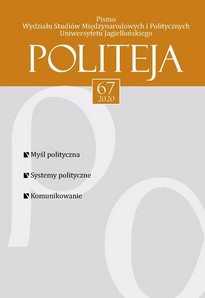Polskie zjawy polityczne
Poland’s Political Apparitions: How to Dispel Them
Author(s): Adam ChmielewskiSubject(s): Political Philosophy, Political history, Government/Political systems, Political behavior, Political economy, Comparative politics, Nationalism Studies
Published by: KSIĘGARNIA AKADEMICKA Sp. z o.o.
Keywords: political aesthetics; nationalism; social democracy; neoliberalism; egalitarian liberalism;
Summary/Abstract: In this paper I will argue that within the decades since the Velvet Revolution of 1989, the mutual perception of the liberal and leftist political formations negatively affected the prospects of their possible cooperation. A failure of the Polish liberals to cooperate with Poland’s Left was among the main reasons for the inability to form a progressive alliance. More importantly, it left a fertile ground upon which populist and authoritarian movements were able to grow. As a result, Poland, initially presented as a role model of the transition from the conditions of the “real” socialism, has become an oppressive despotic regime, just like Turkey and Hungary. I will attempt to explain the emergence of the non-liberal democracy in Poland by stressing in particular the failure of the Polish liberals to take seriously the problems of social and economic exclusion resulting from the economic shock therapy applied during the transformative decades. Pointing to the tradition of the egalitarian liberalism, largely overlooked in Poland, I will argue that there are both doctrinal resources and practical models which could be tapped by Polish liberals in order to establish a fruitful cooperation with the Poland’s Left. Such a programme would have a chance to succeed on the condition of dispelling the phantom of neoliberalism.
Journal: Politeja - Pismo Wydziału Studiów Międzynarodowych i Politycznych Uniwersytetu Jagiellońskiego
- Issue Year: 17/2020
- Issue No: 67
- Page Range: 3-33
- Page Count: 32
- Language: Polish

